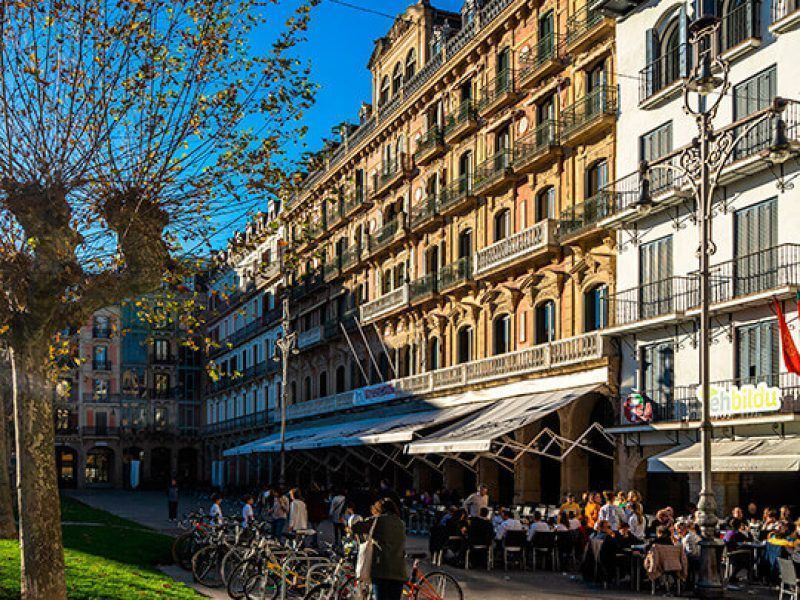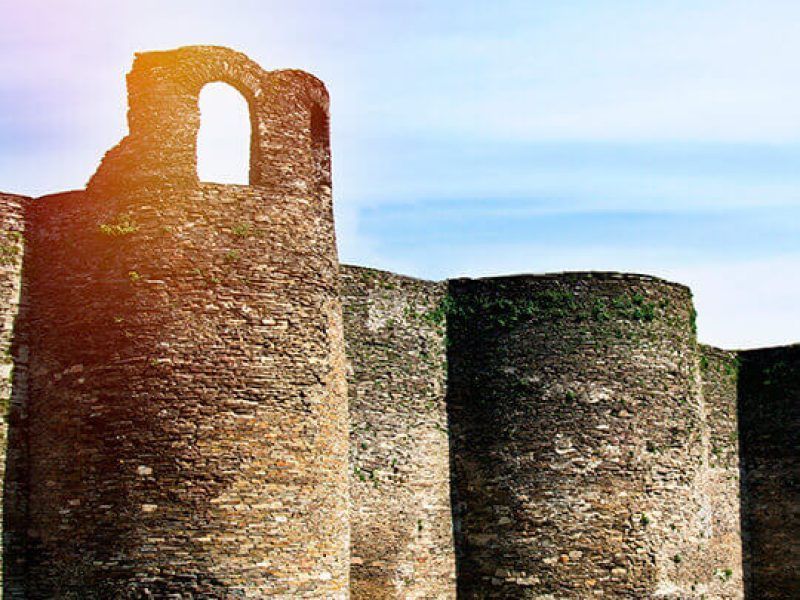The Pilgrimage Route to Compostella. There are several routes to the tomb of the apostle Saint James in the Cathedral of Santiago de Compostela. Although the French route (Camino Francés) attracts the most pilgrims, several other pilgrimage routes have emerged through northern Spain over the centuries. Which Camino de Santiago route is most suitable for you? You can find out here.
Exploring the Camino to Santiago de Compostela
In this blog, we describe the 5 most popular stops along the Pilgrimage Route to Compostella. Most of these stops are on the Camino Frances. This starts in Saint Jean Pied de Port and ends, over 850 km away, in Santiago de Compostela. Besides an active effort, walking or cycling a Camino to Santiago de Compstella is a unique opportunity to discover northern Spain in a different way. Nature lovers also enjoy this journey as it is full of contrasts. It is definitely a wonderful adventure!
1. The streets of Pamplona
The Pilgrimage Route to Compostella is not just about walking or cycling. The Camino to Santiago de Compostela is also about enjoying Spanish cuisine and culture. In Pamplona, which is located on the Camino Frances, pilgrims have life easy, as the narrow streets are full of tempting bars and restaurants. A visit to the city hall is not to be missed either – the building has an impressive Baroque façade. Of course, during your journey through Compostella in Pamplona, you will pay a visit to Plaza de Torros. Because Pamplona is of course world-famous for its controversial bull runs during the San Fermín festival (6 – 14 July). Our personal tip for delicious local sweets and coffee: Café Peregrino.

2. Episcopal Palace of Astorga
Most of Catalan architect Antoni Gaudí’s work is in Barcelona, but if you visit the town of Astorga during your journey to Compostella, you can enjoy another of his fantastic architectural creations: the Episcopal Palace of Astorga. This stop is also on the Camino Frances. Which can be done either on foot or by bike (or Ebike).
The building, built in grey granite from El Bierzo , is in neo-medieval style in harmony with its location, including the cathedral in particular. However, it also contains some typical elements of the later Gaudí, such as the arches of the entrance with buttresses and the chimneys integrated into the side walls . Gaudí had conceived a five-metre-high angel to crown the façade, but it was never mounted. The facade has four cylindrical towers and is surrounded by a ditch.

3. The Cathedral of León
Our personal favourite on the Pilgrimage Route to Compostella and an absolutely obligatory stop during your journey to Compostella . León’s Cathedral, where the stained-glass windows are one of the most impressive splashes of colour. The stained glass in the cathedral dates from the 13th to the 20th century and covers an area of 1,765 square metres. Under the floor are Roman hippos that made it difficult to place the foundations of the pillars and caused water filtration.
Over the centuries, the cathedral of León has undergone successive restorations in which a number of famous architects have collaborated. Inside the cathedral, you can take an audio tour, even in Dutch. Booking in advance is not necessary.

4. City walls of Lugo
Another place you should definitely stop at during your Pilgrimage Route to Compostella: Lugo. The Camino Primitivo runs through Lugo. This route to Compostella starts in Oviedo and ends in Santiago de Compostela.
Lugo offers visitors 2.2 kilometres of Roman city walls. They are the best preserved in the world. The wall, which surrounds the city’s old town, became a World Heritage Site in 2000. The wall contains a total area of 34.4 ha. The width of the wall is 4.2 metres but reaches 7 metres here and there.
The wall has a series of defensive towers. Considering the distance between the towers, there could have been 85 or 86 towers, 46 of them are very well preserved and the other 39 are more or less preserved.
The towers range in size from 5.35 to 12.80 metres. One of the towers has windows 1.15 metres wide and 1.43 metres high.

5. Cathedral of Santiago de Compostela
Well, and then during your Camino you have arrived in the overwhelming Santiago de Compostela. Save the best for last! Because the cathedral of Santiago de Compostela and admiring its spectacular beauty is the best reward after walking or cycling for miles.
There is no written rule, but the best view of the cathedral is the one you can see when you lie down on the ground in Plaza del Obradoiro
JUST A LITTLE TIP: DURING THIS 12-DAY CAMINO FROM LEON TO SANTIAGO, YOU PASTE ONLY 3 out of 5 STOPS

Discover More on Your Pilgrimage to Compostella
As you traverse the diverse landscapes and historic cities along the Pilgrimage Route to Compostella, each step offers not just a physical challenge but also a spiritual enrichment. This journey is not merely a tourist attraction; it is a personal quest that might transform the way you see the world. Beyond the physical exertion, the route offers a unique blend of cultural immersion, historical exploration, and personal introspection. Whether you are seeking solitude or community, the Camino provides ample opportunities to find both.
Exploring this revered path gives you the chance to connect with other pilgrims from around the globe, each with their own stories and reasons for making the journey. The shared experiences along the route foster a sense of camaraderie and understanding that often lasts a lifetime. Moreover, the local communities along the Camino are incredibly welcoming, providing warmth and hospitality that enhance the pilgrim experience.
The End Is Just the Beginning
In embracing the challenges and rewards of the Pilgrimage Route to Compostella, you partake in a timeless tradition that continues to draw and inspire thousands every year. Whether you return home or continue exploring, the Camino is sure to leave an indelible mark on your heart and mind. Read much more in this blog or contact us. We love to help you so you can have a unique experience on the Camino as well.



Comment (0)